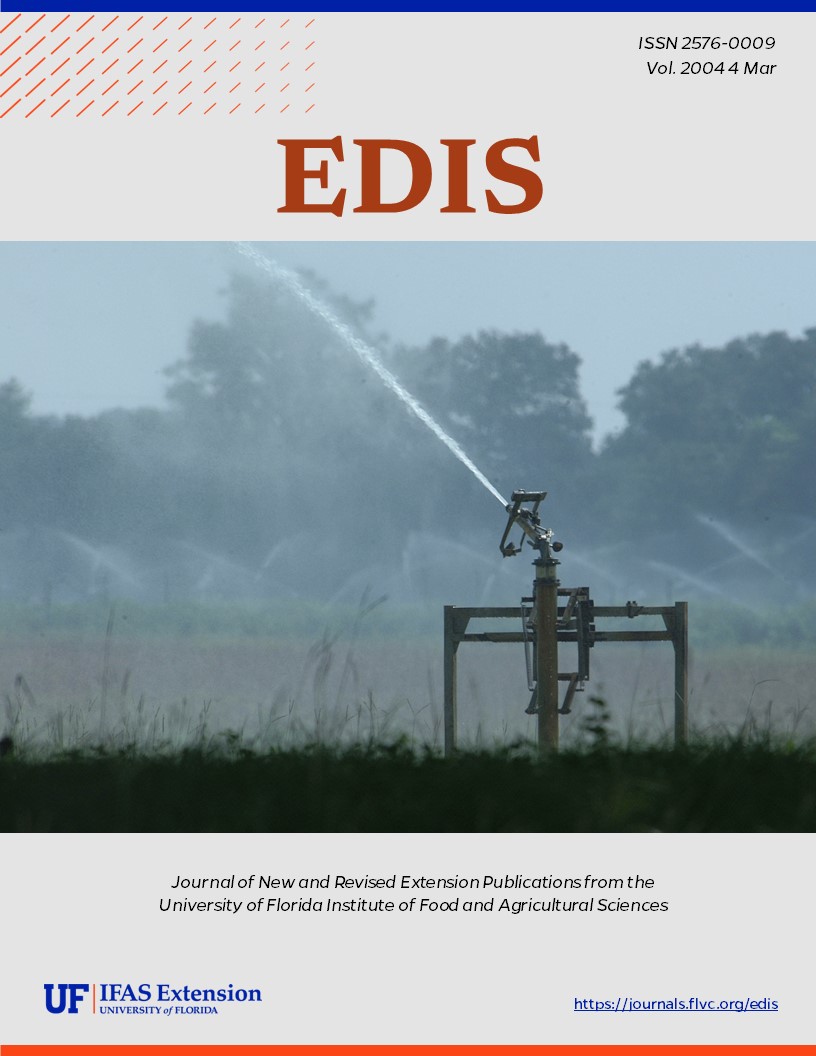Abstract
The forest tent caterpillar, Malacosoma disstria Hübner, is the most widely distributed indigenous tent caterpillar in North America (Furniss and Carolin 1977). The forest tent caterpillar has been recognized as an important defoliator of a wide variety of deciduous hardwood trees throughout its range for many years (Batzer and Morris 1978). Although this univoltine insect is called a tent caterpillar, it is unlike other Malacosoma species in that the larvae do not construct tents. Instead, forest tent caterpillars spin silken mats on the trunks and large branches where they congregate to molt or rest from feeding. Larvae also deposit silk in strands along which they travel to and from feeding sites. The caterpillars themselves are relatively harmless to people (i.e., they do not bite or sting) although a few people have an allergic reaction to handling them. This document is EENY-184 (originally published as DPI Entomology Circular 385), one of a series of Featured Creatures from the Entomology and Nematology Department, Florida Cooperative Extension Service, Institute of Food and Agricultural Sciences, University of Florida. Published: January 2001.
References
Anderson, R.F. 1960. Forest and shade tree entomology. John Wiley & Sons, Inc. New York, NY. 428 p.
Batzer, H.O., and R.C. Morris. (1978). Forest Tent Caterpillar. U.S. Department of Agriculture, Forest Service, Forest Insect & Disease Leaflet 9. http://willow.ncfes.umn.edu/fidl-ftc/tentcat.htm (31 December 2000).
Dixon, W.N., and J.L. Foltz. 1991. Caterpillars that are not the gypsy moth caterpillar. Some forest Lepidoptera in Florida (Lepidoptera: Arctiidae, Lasiocampidae, Lymantriidae). Florida Department of Agriculture & Consumer Services, Division of Plant Industry, Gainesville, FL. Entomology Circular No. 270. 2 p.
Drooz, A.T. (ed.). 1985. Insects of eastern forests. U.S. Department of Agriculture, Forest Service, Washington, D.C. Miscellaneous Publication 1426. 608 p.
Frank, J.H., and J.L. Foltz. 1997. Classical biological control of pest insects of trees in the southern United States: a review and recommendations. U.S. Department of Agriculture, Forest Service, Forest Health Technology Enterprise Team, Technology Transfer, Biological Control. Morgantown, WV. FHTET-96-20. 78 p.
Furniss, R.L., and V.M. Carolin. 1977. Western forest insects. U.S. Department of Agriculture, Forest Service, Washington, D.C. Miscellaneous Publication 1339. 654 p. https://doi.org/10.5962/bhl.title.131875
Myers, J.H. 1993. Population outbreaks in forest Lepidoptera. American Scientist 81: 240- 251.
Parry, D., J.R. Spence, and W.J.A. Volney. 1997. Responses of natural enemies to experimentally increased populations of forest tent caterpillar, Malacosoma disstria. Ecological Entomology 22: 97-108. https://doi.org/10.1046/j.1365-2311.1997.00022.x
U.S. Department of Agriculture, Forest Service. 1996. Pest Alert: Forest Tent Caterpillar. U.S. Department of Agriculture, Forest Service, Northeastern Area and Region 8. NA-PR-02- 96. 1 p.
Witter, J.A., and H.M. Kuhlman. 1972. A review of the parasites and predators of tent caterpillars (Malacosoma spp.) in North America. Minnesota Agricultural Experiment Station. Technical Bulletin 289. 48 p.
Unless otherwise specified, articles published in the EDIS journal after January 1, 2024 are licensed under a Creative Commons Attribution-NonCommercial-NoDerivs 4.0 International (CC BY-NC-ND 4.0) license.

